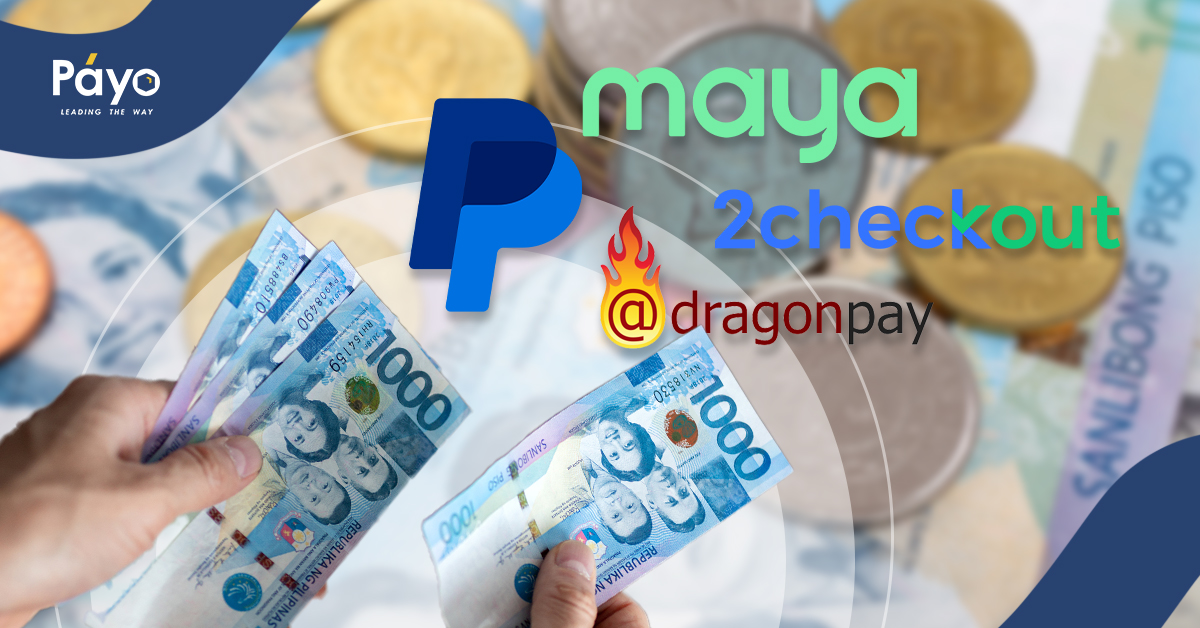

Best payment gateways for E-commerce in the Philippines
Payment gateways are like the cash registers of the online world. They are the systems that allow for electronic payments for E-commerce transactions. Their primary role is to facilitate transactions, process customer information, and connect the merchant and the customer’s bank.
This ability to securely process transactions in a user-friendly manner is essential to the overall customer experience, thereby driving better conversion rates and business success.
In the Philippines, where the E-commerce industry is still in the development phase, ensuring a smooth transaction process for consumers is critical. According to the Banko Sentral ng Pilipinas (BSP), only 56% of Filipino adults held a bank account as of 2021. This points to the importance of offering diverse payment methods, such as e-wallets and cash on delivery, along with traditional card payments.
Furthermore, as E-commerce continues to grow, it also becomes an attractive target for cybercriminals. A 2022 study by Kaspersky revealed that the Philippines is the biggest target of phishing attacks in the Southeast Asia. This underlines the importance of having a reliable payment gateway to ensure the security of consumers’ sensitive data and maintain customer trust.
In a nutshell, integrating a secure and reliable payment gateway is not just a business preference; it’s a necessity. Particularly in emerging markets like the Philippines, having a versatile and secure payment gateway is critical to encouraging customer confidence, improving user experience, and thereby driving business growth.
This guide will help beginners understand the basics of payment gateways, their relevance in the E-commerce landscape, the key factors to consider while choosing a gateway, and more. It’s time to take your first step towards building a thriving E-commerce business in the Philippines!
What is a Payment Gateway?
In its simplest form, a payment gateway is a technology used by E-commerce merchants to accept and process digital payments. It serves as a bridge between a merchant’s website and the bank that processes a customer’s payment.
Key Features of a Good Payment Gateway
To maximize the benefit of a payment gateway, look for these features:
- Security: A secure gateway is one that meets the Payment Card Industry Data Security Standard (PCI-DSS). This standard helps protect sensitive information during transactions.
- Multiple Payment Methods: A gateway that offers various payment methods like credit/debit cards, PayPal, and mobile payments ensures more customers can transact on your platform.
- User-friendly Interface: An intuitive, easy-to-navigate payment process can improve customer experience and reduce shopping cart abandonment.
- Speed: A good gateway should process payments quickly. Slow processing times can lead to customer dissatisfaction and reduced sales.
- Integrations: The payment gateway should integrate easily with your E-commerce platform and other business software.
- Customer Support: Look for gateways that offer robust, 24/7 customer support.
How Payment Gateways Work in E-commerce
A payment gateway’s process can be broken down into these steps:
Step 1: A customer places an order on a website and chooses to pay via credit/debit card or any other online payment method.
Step 2: The web browser encrypts the data to be sent between it and the vendor’s web server. This is done via Secure Socket Layer (SSL) encryption.
Step 3: The payment gateway forwards the transaction information to the merchant’s acquiring bank or the payment processor used by the merchant’s bank.
Step 4: The transaction information is then forwarded to the customer’s card issuing bank for transaction authorization.
Step 5: The response from the customer’s bank is forwarded to the payment gateway, which transmits it to the website (the merchant) to process the payment and complete the transaction.
Pros & Cons of Using Payment Gateways for Businesses
Pros:
- Secure Transactions: Payment gateways use advanced encryption technologies to secure sensitive information, protecting both businesses and consumers from fraud.
- Broadened Customer Reach: With the ability to process digital payments, businesses can reach a global audience.
- Enhanced Customer Experience: By offering seamless and swift transactions, payment gateways enhance the overall user experience.
Cons:
- Costs: Setting up a payment gateway often involves setup fees, monthly fees, and transaction fees.
- Technical Glitches: Downtimes or technical issues can lead to lost sales.
- Security Threats: Despite security measures, payment gateways can still be targeted by cybercriminals.
While there are some drawbacks to using payment gateways, the benefits often outweigh them. Given the digital nature of E-commerce, having a reliable, secure, and efficient payment gateway is key to succeeding in the online marketplace.
Top Payment Gateways in the Philippines
Here are some of the best E-commerce payment gateways that are widely used in the Philippines. These platforms are instrumental in the growth of some of the most popular online businesses in the country, serving as a reliable and efficient link between sellers and buyers for financial transactions.
1. PayPal
PayPal is a global online payments system that supports online money transfers. It’s one of the most recognized and trusted payment gateways worldwide, including in the Philippines.
Features and Benefits of PayPal
PayPal offers secure transactions with its fraud prevention measures. It supports a broad range of payment options, including credit cards, debit cards, and PayPal balance. Additionally, PayPal’s global recognition can improve customer confidence and trust in transactions.
Limitations of PayPal in the Philippine Market
While PayPal is globally accepted, it tends to have higher transaction fees compared to other local payment gateways. Additionally, setting up a PayPal merchant account can be complex for some beginners.
Cost Structure:
While there are no setup or monthly fees, PayPal charges a transaction fee of 3.9% plus a fixed fee based on the currency received.
2. Maya
Maya is a local payment gateway that provides online payment solutions in the Philippines. It allows consumers, merchants, and organizations to make secure and convenient digital payments.
Features and Benefits of Maya
Maya supports a variety of payment methods, including card payments, QR payments, and Maya wallet. Its security measures are aligned with international standards, providing a secure platform for transactions.
Limitations of Maya
Maya is primarily focused on the Philippine market, which can limit the scope for international transactions.
Cost Structure:
Maya offers a no setup fee and no monthly fee for their standard package, but transaction fees are applicable, typically around 3.5%.
3. DragonPay
DragonPay is a leading Philippine-based payment gateway that allows customers to pay for online purchases using their preferred payment method, including online banking, over-the-counter (OTC) banking and non-bank outlets.
Features and Benefits of DragonPay
DragonPay’s strength lies in its wide range of payment options, particularly catering to Filipinos without a credit card. This makes it an attractive choice for merchants aiming for a broad local customer base.
Limitations of DragonPay
While DragonPay excels in local transactions, it may not be the best choice for businesses looking to cater to international customers due to its limited global recognition.
Cost Structure:
It requires a setup fee of P36,000 and an annual fee but offers competitive transaction rates that vary depending on the payment method used.
4. 2Checkout
2Checkout is a global payment gateway that allows businesses to accept online and mobile payments from buyers worldwide.
Features and Benefits of 2Checkout
2Checkout supports a broad range of payment methods, including credit/debit cards and PayPal. It also offers advanced fraud protection, seamless integration, and multi-currency support.
Limitations of 2Checkout
2Checkout may impose stricter requirements for approval compared to other gateways. Additionally, its transaction fees can be higher than local payment gateways.
Cost Structure:
No setup or monthly fees but charges a transaction fee starting from 3.5% plus a small fixed fee.
5. PayMongo
PayMongo is a Philippine fintech startup that provides online payment solutions for businesses of all sizes.
Features and Benefits of PayMongo
PayMongo provides a simple, developer-friendly platform that supports various payment methods. Its modern infrastructure is designed to provide seamless and secure transactions.
Limitations of PayMongo
Being a relatively new player, PayMongo might lack the global recognition and trust established by longer-standing gateways. However, it is swiftly gaining ground in the local market.
Choosing the right payment gateway depends on your business requirements, the market you’re catering to, and the type of transactions you’re processing. Consider all these factors before making your choice.
Cost Structure:
PayMongo has no setup or monthly fees, charging only a transaction fee of 3.5% for credit and debit cards.
How to Choose the Best Payment Gateway for Your Business
The right payment gateway can significantly impact your business’s growth and customer satisfaction.
A gateway that aligns with your business needs can provide a smooth and secure transaction experience for your customers, increase conversion rates, and expand your customer base.
For example, if your target market primarily uses mobile payments, a gateway supporting this payment method is essential.
Factors to Consider When Choosing a Payment Gateway
- Cost: Consider the setup fees, transaction fees, and any additional costs. Choose a gateway that offers a good balance between cost and quality of service.
- Security: Look for a gateway that complies with international security standards like the Payment Card Industry Data Security Standard (PCI-DSS).
- Payment Options: The more payment options a gateway supports, the more convenient it is for your customers.
- Integration: The payment gateway should easily integrate with your E-commerce platform.
- Customer Support: Look for gateways that offer strong, 24/7 customer support.
- Global Reach: If your business caters to international customers, choose a gateway that supports multi-currency transactions.
Practical Tips for Integrating a Payment Gateway
1. Understand the integration process
Some payment gateways offer plugins or modules that seamlessly integrate with popular E-commerce platforms. If not, you might need to use their APIs. Make sure you or your developer understands the process.
2. Test before going live
Most payment gateways offer a “sandbox” environment for testing. Use this to ensure everything works correctly before going live.
3. Plan for downtime
Have a backup plan in case of downtime or technical issues with the payment gateway. This might mean having an alternative payment method available.
4. Leverage customer support
Don’t hesitate to contact the payment gateway’s customer support if you encounter any issues during integration.
Remember, the goal is to provide a seamless and secure payment experience for your customers. The right payment gateway can help you achieve that while supporting your business’s growth.
These are just some of the things you need to know when it comes to E-commerce payment gateways. If you need help not only with your payment gateway, but also with other aspects of E-commerce, then Payo is the right choice for you!
Payo helps you with every step of E-commerce, from Warehousing and Fulfillment to Cash on Delivery Integration and Advanced Remittance. For more information on how Payo can help you step up your E-commerce game, you can sign up today or send a message to info@payo.asia.

